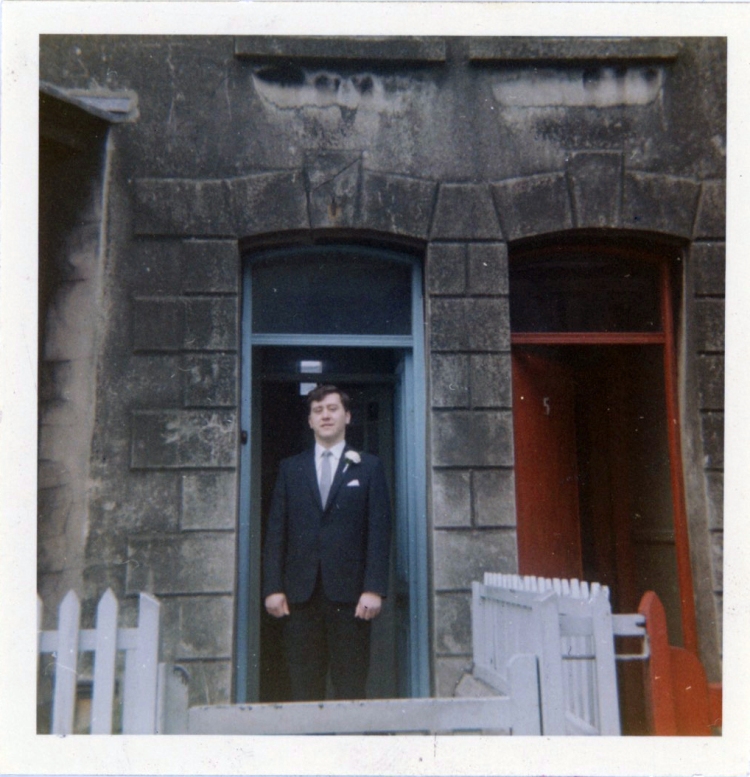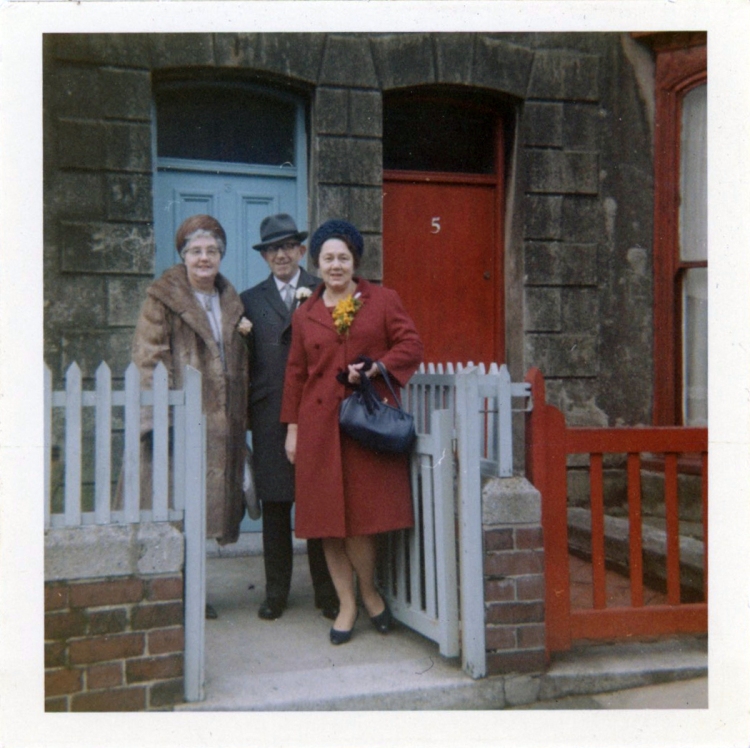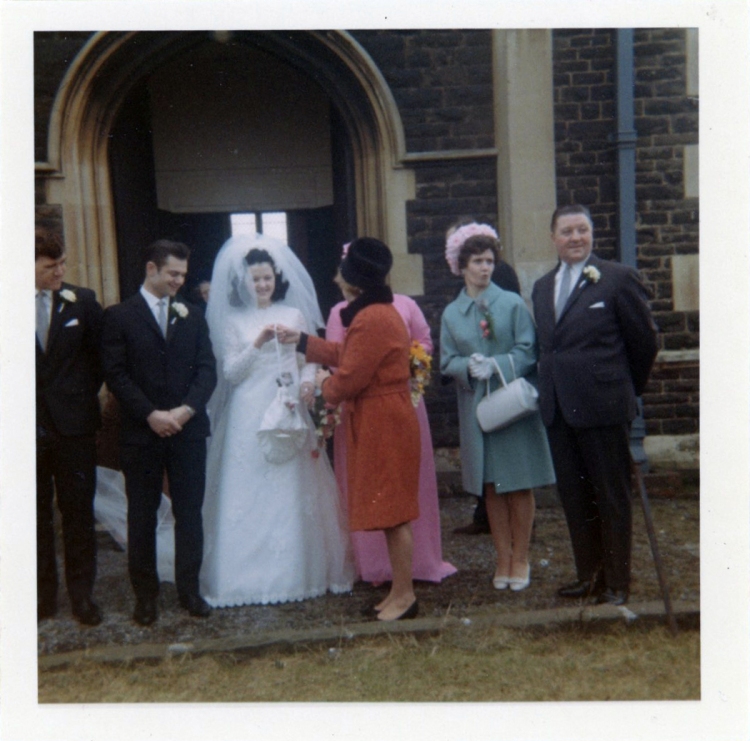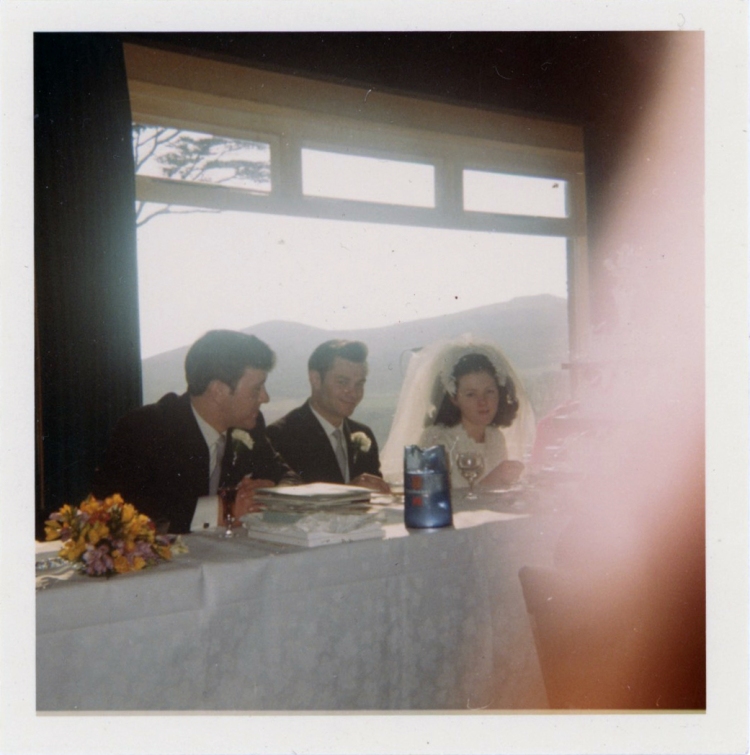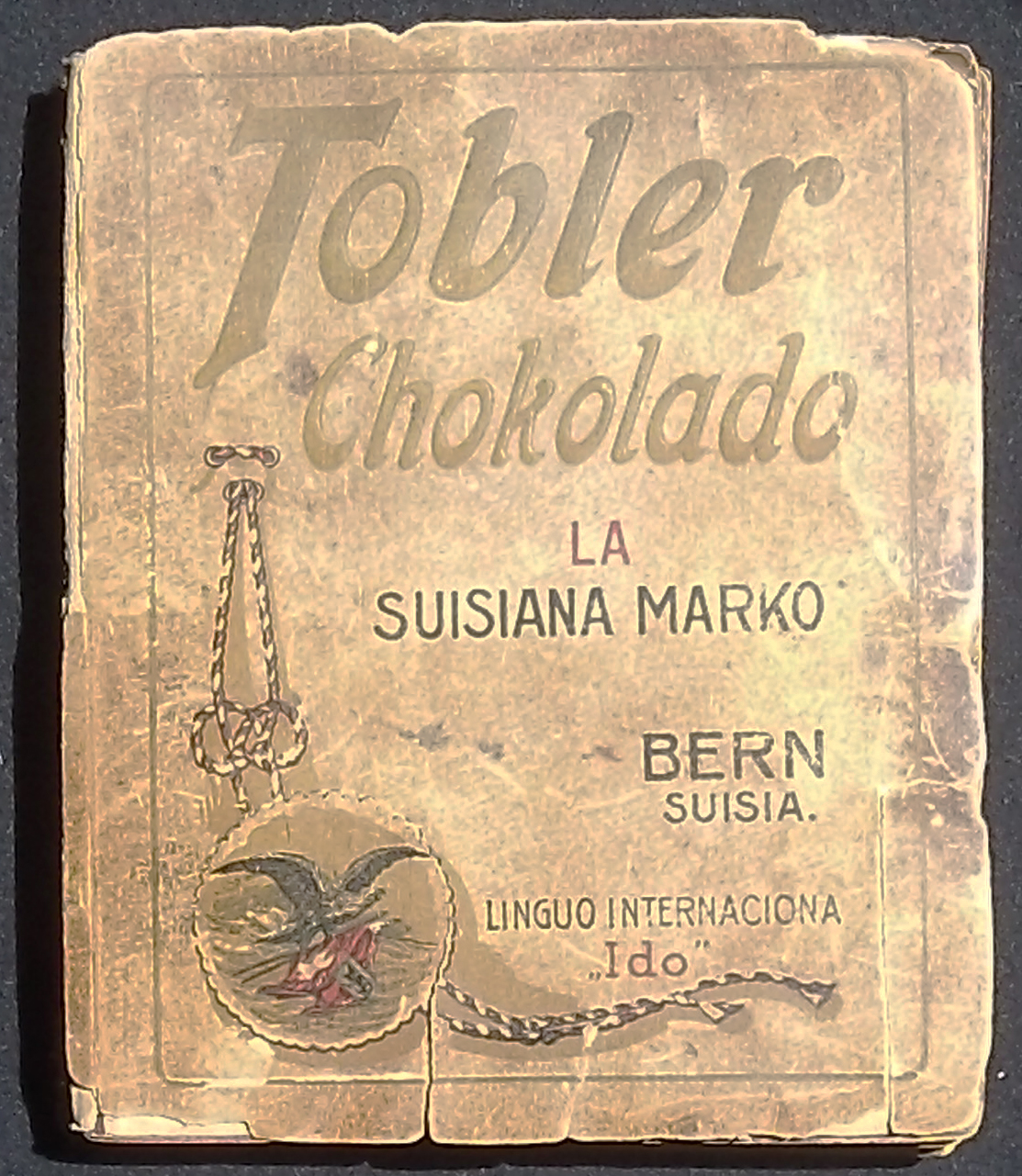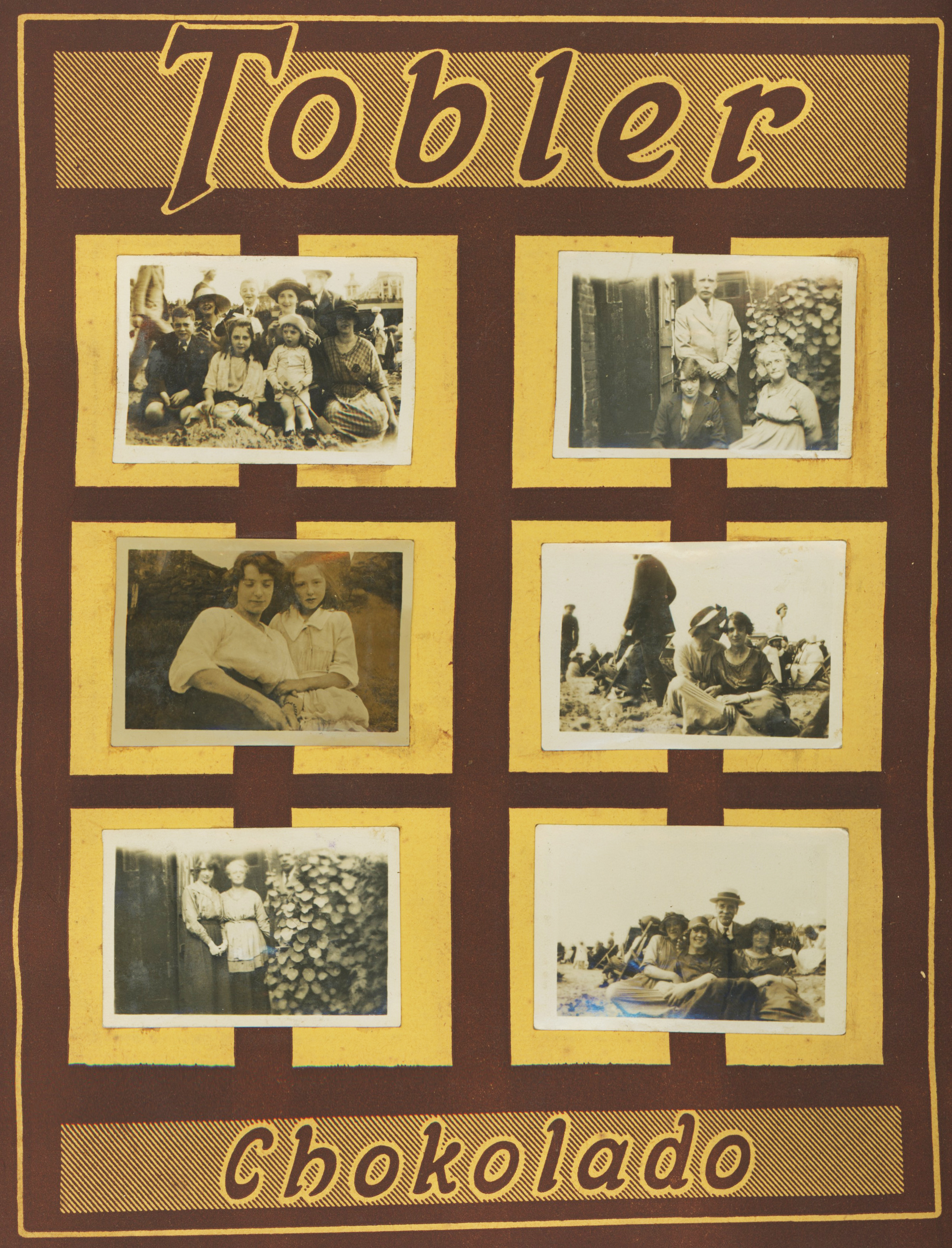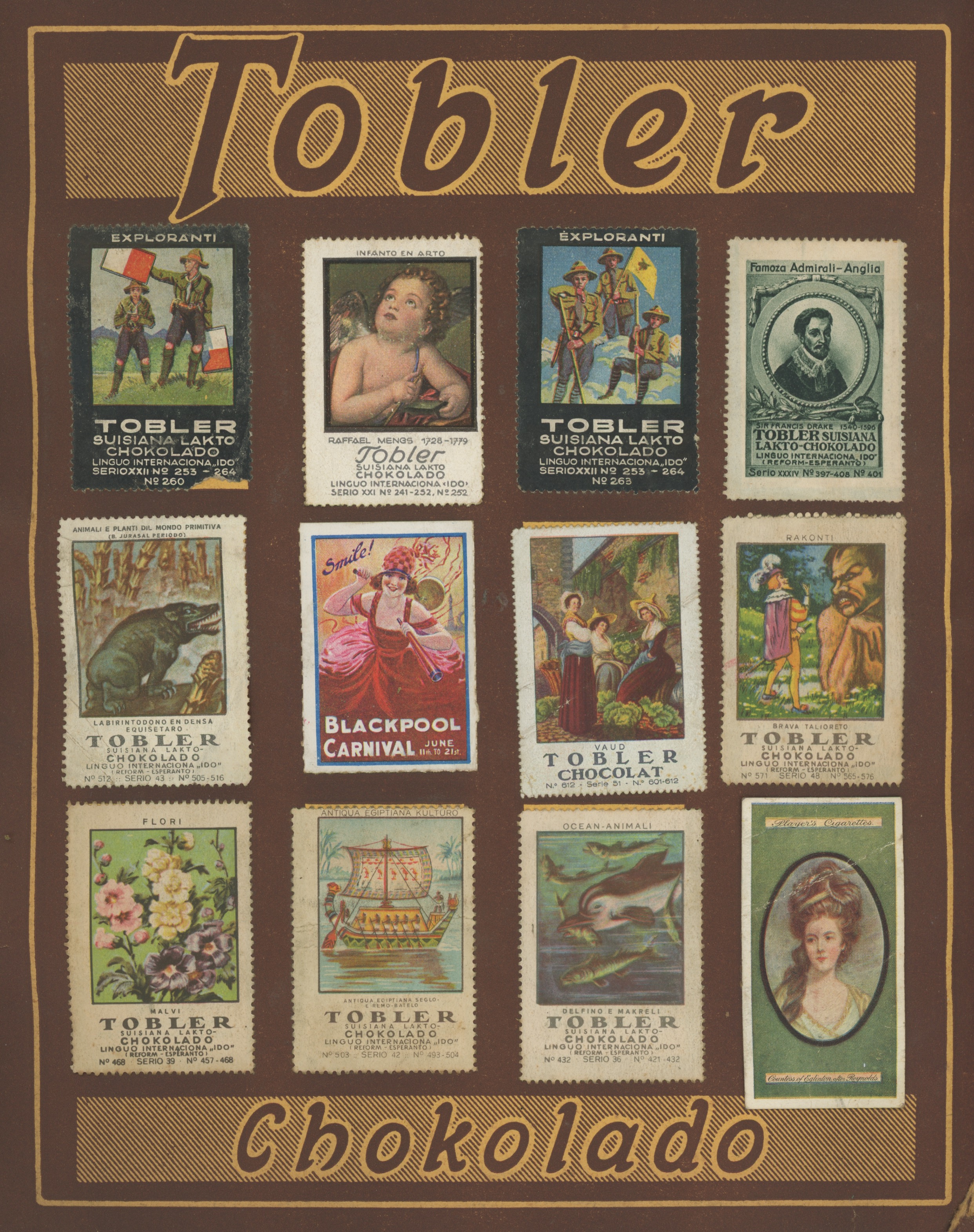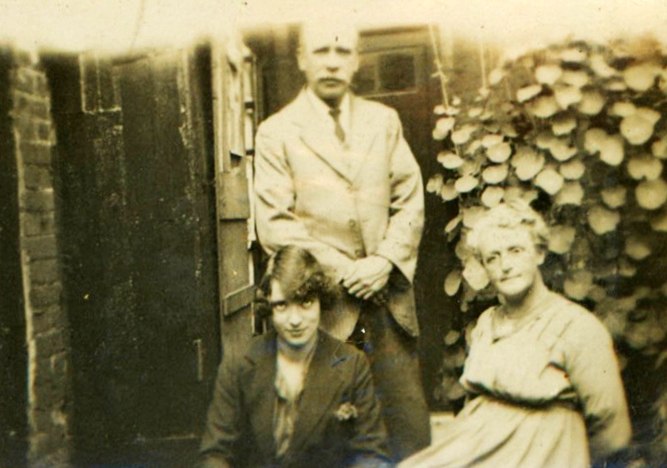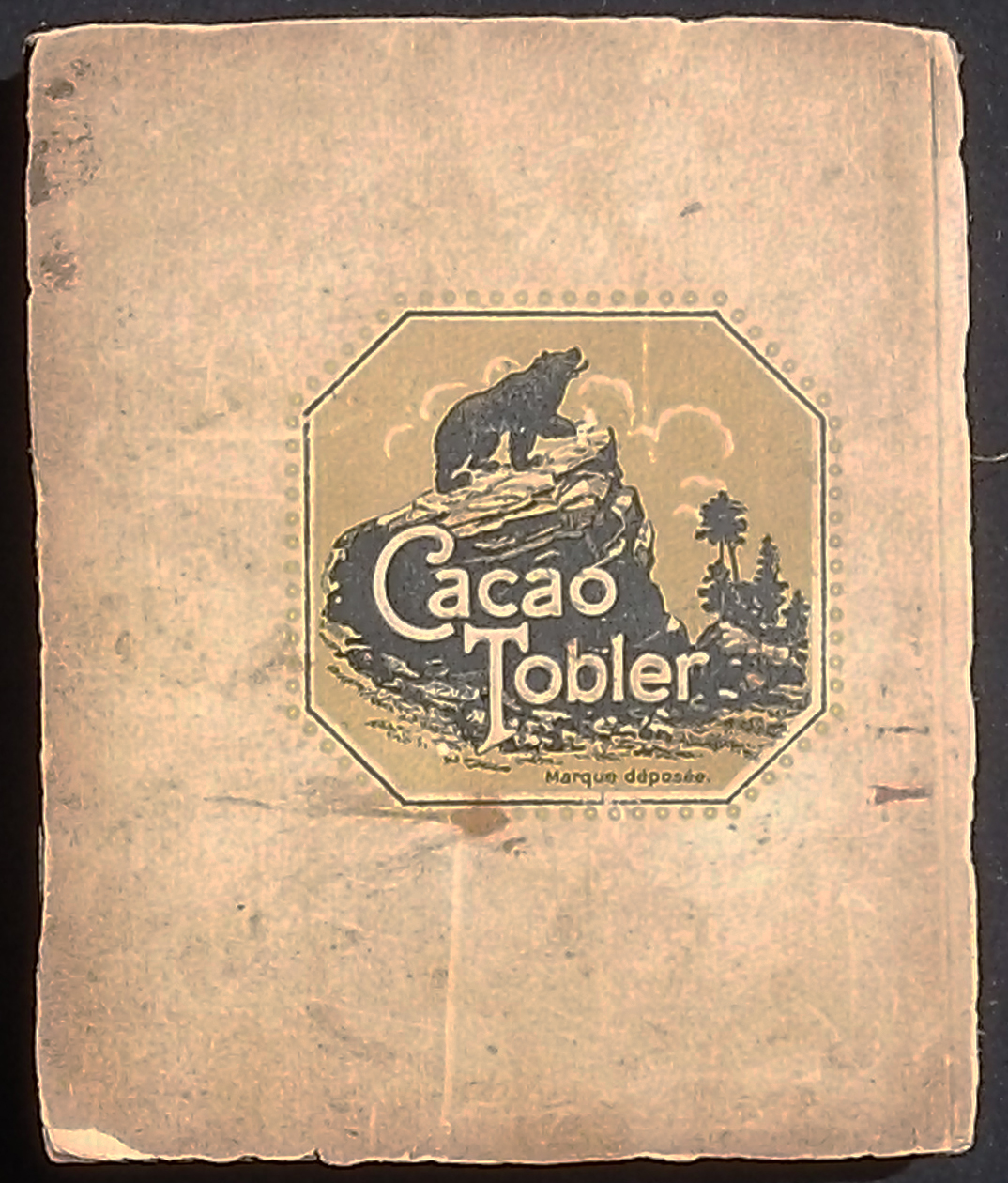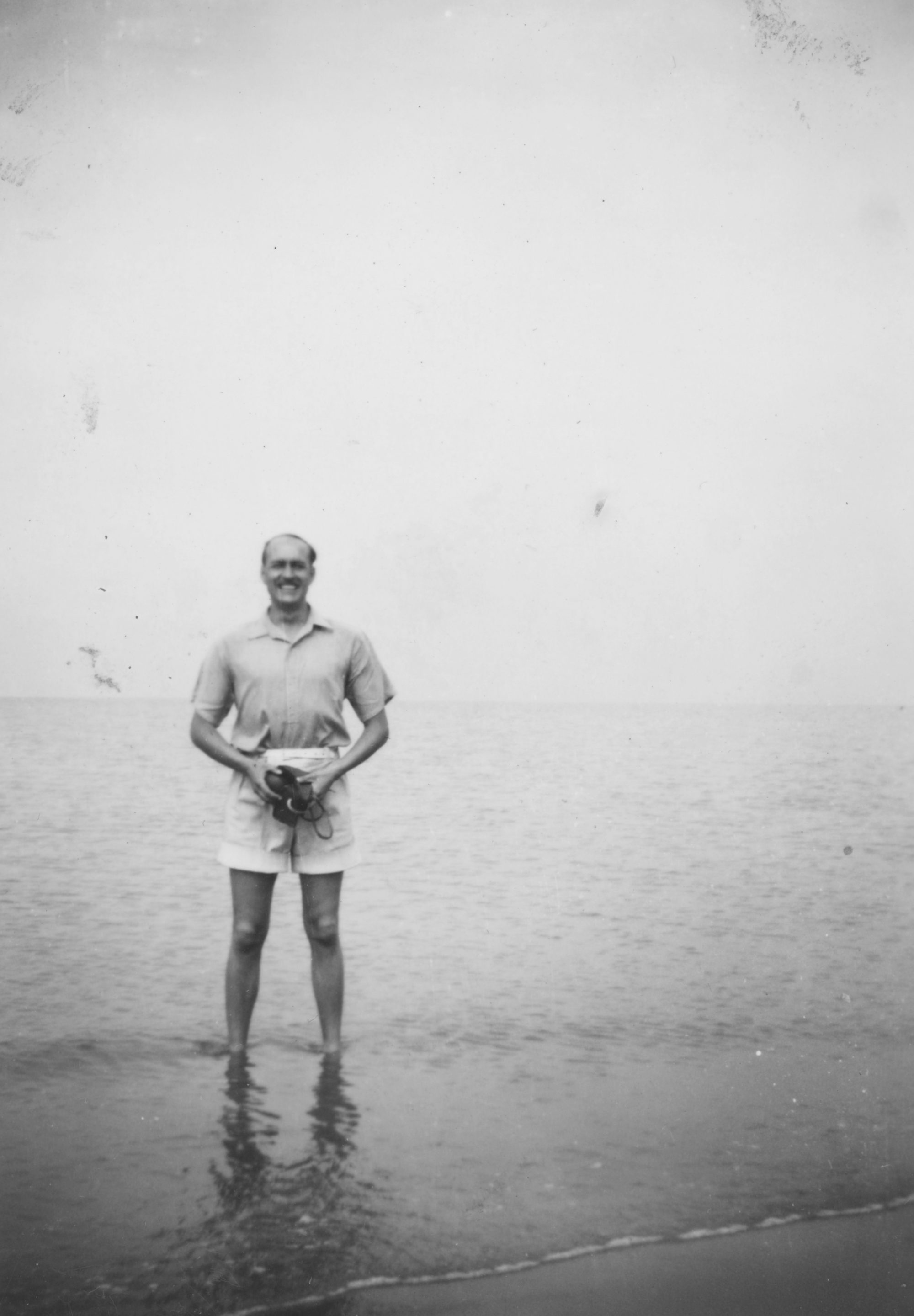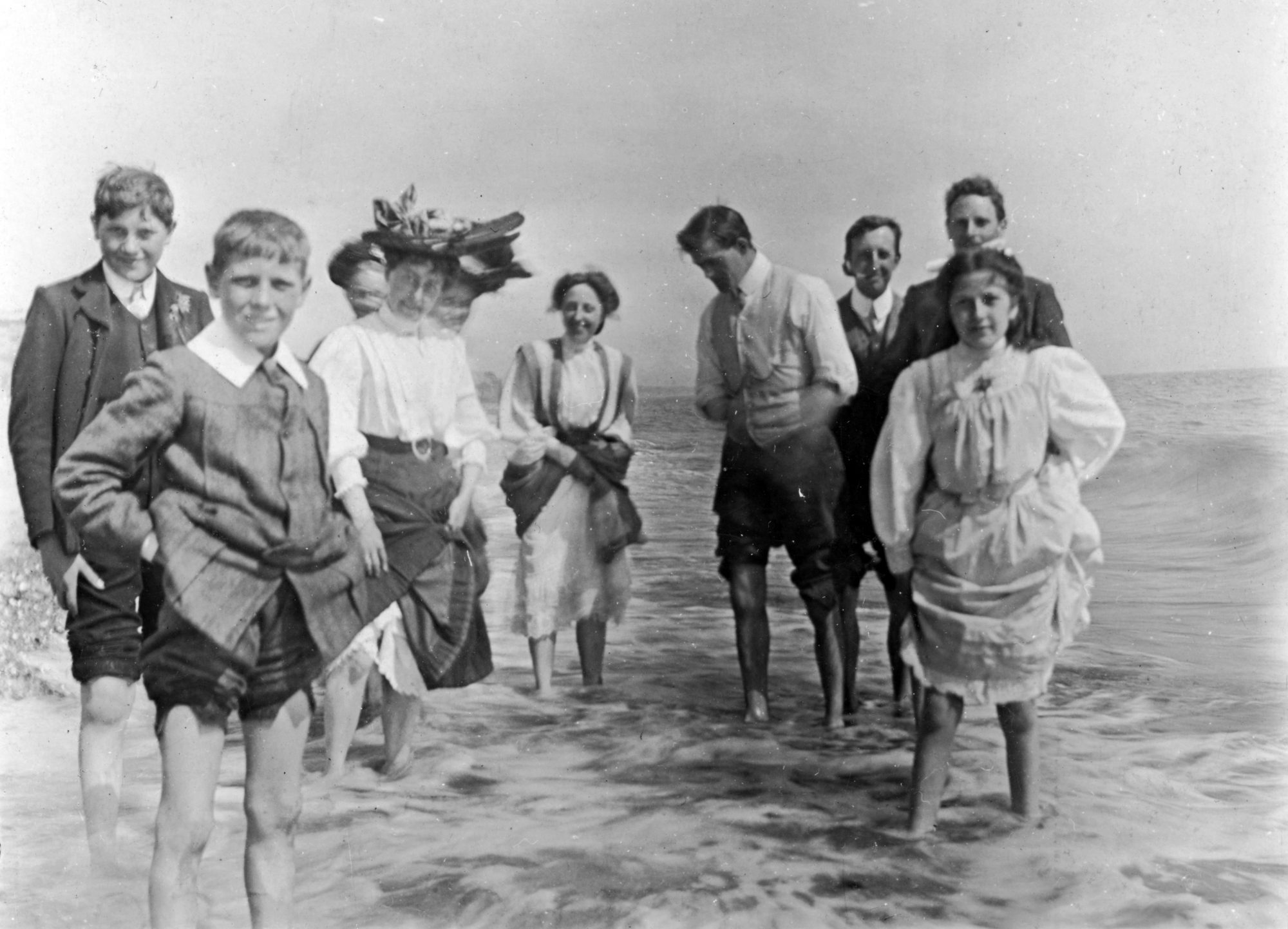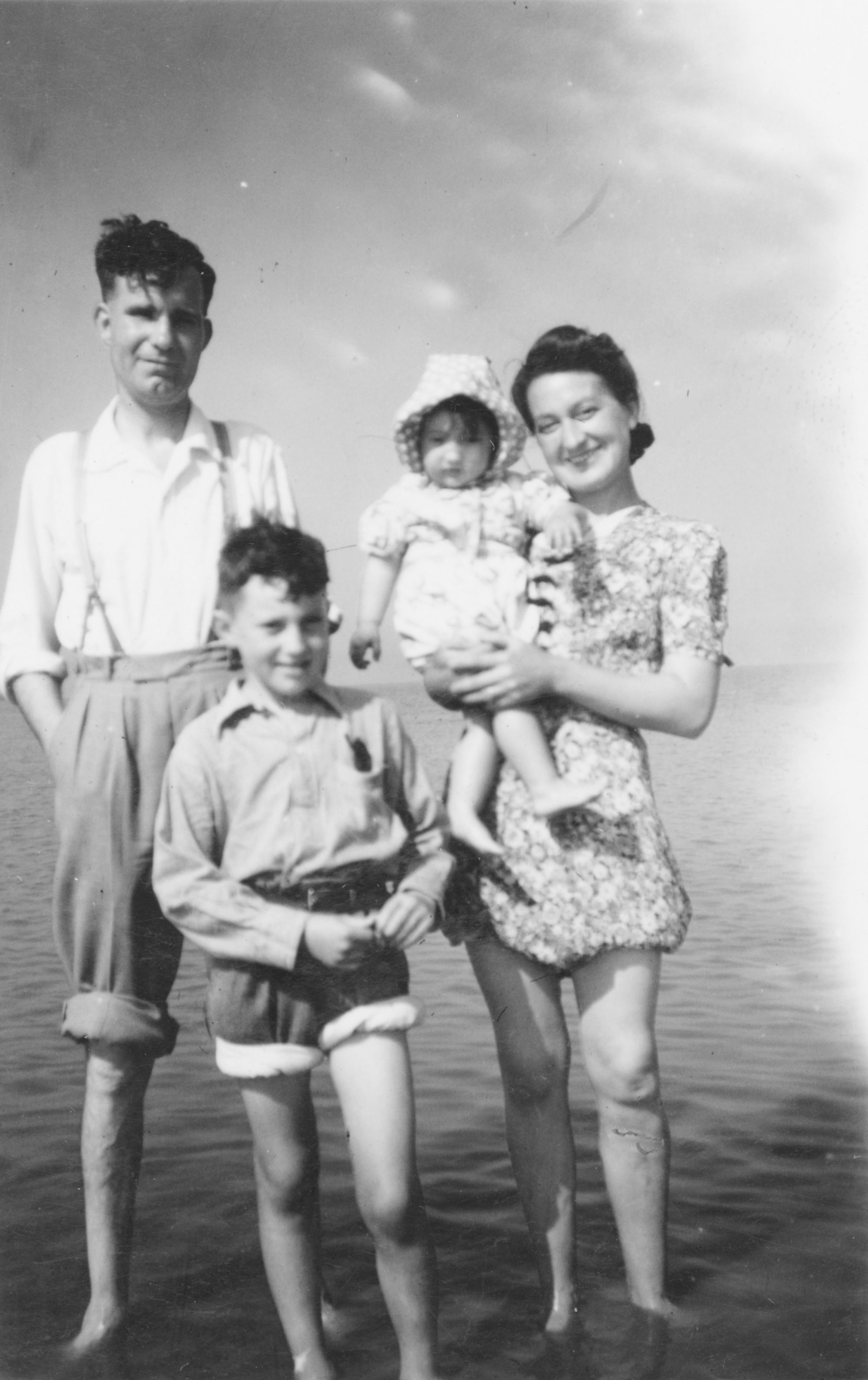This set of photographs depicts the wedding day of a young couple from Aldridge in the West Midlands. The chemist E.V Davies, at 47 Birchills Street, Walsall, processed the photos in the mid-1960s. The official wedding photographer has not taken these images; in fact he appears in one of the shots. They have been taken by a friend of the couple, possibly the best man’s groomsman, who has left a far more intimate and detailed account of the day. The whole event has been captured, from the arrival of the best man at the home of the groom early in the morning to the reception in the late afternoon.
The best man and groom pose at the garden gate with the poise of men who wear suits only occasionally — the groom looks like he’s concealing playing cards up his sleeve, and the best man seems to have chosen this moment to nervously scratch his behind. When the family leave the house for the church, Auntie instinctively crooks her left knee slightly for the camera, in a 1940s glamour pose. As the guests arrive at the church, a male member of the congregation, with a mischievous smile on his face, rubs his hands together, possibly to ward off the morning chill or perhaps in anticipation of the wedding feast. Someone has certainly just cracked a joke. Four women outside the church, with the regimented workers’ houses in the background, look like characters in a Ken Loach film waiting out a scene.
A proud dad is shown with his daughter, arms linked for the bride-to-be’s final journey down the aisle. In the shot of the newlyweds, the photographer’s blurred-out finger passing accidently across the lens has dissolved into a shaft of light that could be radiating from the stained-glass windows. As the day closes at the reception, the groom looks like the cat who got the cream, while his young wife, as she has done throughout the day, looks somewhat coyer.
Thanks for the invitation…
Nigel Martin Shephard
